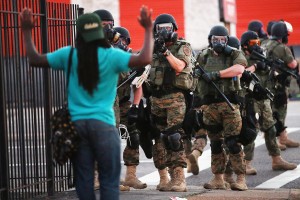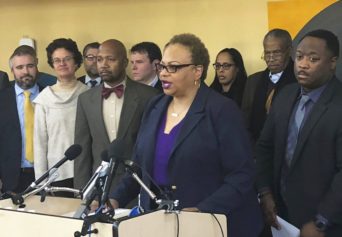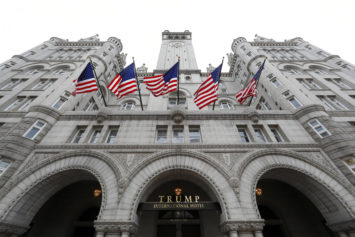According to a U.S. Department of Justice document obtained by the St. Louis Post-Dispatch, law enforcement is to blame for aggravating tensions in Ferguson, Mo. following the August 9, 2014 shooting death of Michael Brown, 18, an unarmed Black teen, by a police officer. The federal agency cites uncoordinated efforts among law enforcement agencies, intimidation against crowds, efforts to protect officers from accountability, and tactics which ultimately violated the First Amendment rights of demonstrators.
“Vague and arbitrary” police orders to crowds to keep moving violated their constitutional rights. Further, military-style equipment “produced a negative reaction” in the community, the report concluded, and the use of snipers perched atop tactical vehicles and pointed at peaceful protesters was inappropriate. Also, the use of tear gas against demonstrators who had no option to retreat, and the use of police dogs for crowd control incited fear in the public and should be prohibited, the Justice Department report stated.
In addition, the report cited a lack of transparency among police agencies, who failed to release information about the Brown shooting to the public, underestimated the role and nature of social media and failed to employ a social media strategy.
“Had law enforcement released information on the officer-involved shooting in a timely manner and continued the information flow as it became available, community distrust and media skepticism would most likely have been lessened,” according to the document. Further, of the four police departments involved in the protests—Ferguson police, St. Louis City and County police departments and the Missouri State Highway Patrol—only St. Louis County force made its policies accessible online.
Some officers removed tags from their uniforms in order to avoid being identified. Moreover, the various police agencies had difficulty communicating with each other through incompatible radio systems, maintaining consistent procedures for arrests and the use of force, and citizens found it “difficult or impossible to lodge complaints” of police misconduct.
“What happened last August was that the overwhelming majority of people that were out there were there for the right reasons,” St. Louis County police chief Jon Belmar told The Huffington Post, defending his department yet saying he “never envisioned” using tactical equipment against demonstrators. “They really were, and that was evident. You could see that right away. Yeah, they were angry, they were emotional, but they were there for the right reasons.” Belmar also said, there was a “very, very small, but very, very active group of violent people that really drove the agitation.”
“We are always willing to engage in constructive dialogue about best practices,” the St. Louis Police Department said in a statement, as reported by Reuters. “We are interested in the final report to identify what we did well and what we may need to improve upon.”
These findings bolster claims by members of the community and civil rights and activist groups who complained of heavy-handed and oppressive police tactics against peaceful demonstrators in the aftermath of the unrest. The larger issue, however, is that for years, around the country, the Black community and other communities of color have complained about heavy-handed police tactics.
The issue of police brutality was evident in the 1960s, during the Civil Rights Movement and in light of the urban rebellions of that day, as Malcolm X complained that, “Once the police have convinced the white public that the so-called Negro community is a criminal element, they can go in and question, brutalize, murder unarmed, innocent Negroes and the white public is gullible enough to back them up. This makes the Negro community a police state. This makes the Negro neighborhood a police state.”
With the war on drugs and the war on terror, police forces such as those in Ferguson and the St. Louis area have procured military weaponry and equipment through the federal government, equipment they are unprepared and untrained to handle. This latest Justice Department report, of which the final version will be released in the coming weeks, demonstrates that fundamental problems must be addressed regarding the police in Ferguson and beyond.


